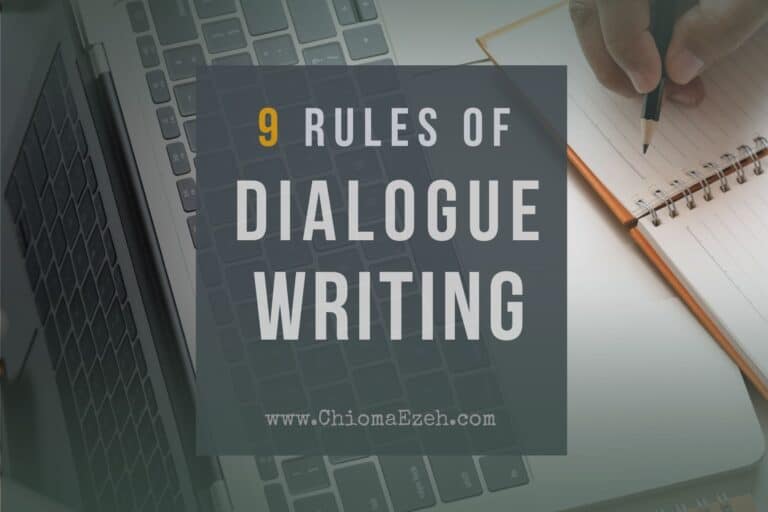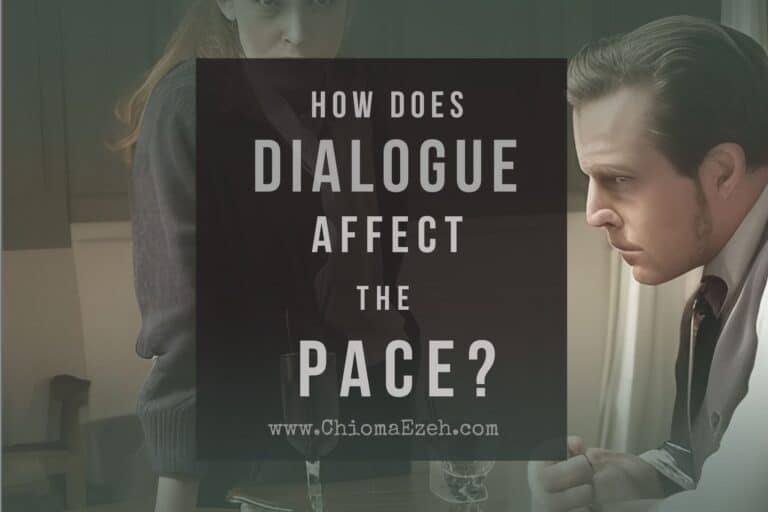How to Write Subtext in Dialogue: 7 Helpful Steps
Subtext, the underlying meaning or message conveyed in a character’s spoken words, is a powerful tool in the arsenal of a skilled writer. It can enrich your storytelling by adding depth, complexity, and nuance to your characters and their relationships. This can make your dialogue more engaging, dynamic, and emotionally resonant.
In this article, we will explore how to write subtext in dialogue writing and discuss various techniques for creating subtext. We will also provide practical tips and examples to help you craft subtexts that highlight the unspoken thoughts of your characters.
👉See our overview guide to writing dialogue for authors
Let’s Talk
Are you a writer aspiring to pen a masterpiece that never fails to captivate? Look no further. Reach out to us and uncover how we can help you to take your writing to unprecedented heights!

What Is Subtext In Dialogue Writing?
Subtext in dialogue writing refers to the underlying or implied meaning behind a character’s spoken words. It is the unspoken message or emotion that a character communicates without explicitly stating it.
Subtext adds depth, nuance, and authenticity to dialogue. It mirrors real-life communication, where people often convey their thoughts and feelings indirectly.
Subtext in dialogue allows writers to reveal characters emotions, desires, and motivations in a subtle and engaging way. It engages the reader’s imagination and encourage them to read between the lines to understand the true intentions of the characters.
What Is the Purpose of Subtext in Dialogue Writing?
Subtext plays a crucial role in dialogue writing for several reasons:
- Authenticity: In real life, people tend to convey their thoughts and feelings implicitly rather than explicitly. Subtexts help you create more authentic communication, and this helps your readers connect with your characters on a deeper level.
- Character development: Subtext can reveal a character’s emotions, desires, fears, and motivations without stating them outright. This enables your readers to infer and deduce information about your characters.
- Conflict and tension: Unspoken feelings and intentions can create or heighten conflict between characters. This often contributes to the story’s overall plot.
- Show, don’t tell: Subtext allows you to demonstrate a character’s emotions and thoughts through actions and words. This means the reader must not rely on exposition or direct statements. This engages their imagination and encourages them to actively participate in interpreting the story.
How to Write Subtext in Dialogue Writing: 7 Ways
To infuse your dialogue with subtext, consider following the techniques explained below:
1. Use Implication:
Let your characters imply their feelings instead of stating them directly. You can do this through metaphors, innuendo, or veiled suggestions. By so doing, you encourage your readers to read between the lines and decipher the characters’ true intentions and emotions.
Example:
Direct: “I’m worried about losing my job.”
Subtext: “These days, it feels like I’m walking on eggshells at work.”
The second dialogue accurately captures the fears (of job loss) of the speaker in an indirect (though implied) way.
2. Use Evasion and deflection:
You can let your characters avoid answering questions or addressing topics directly. Write the dialogue in such as way that indicates that they have something to hide – or are uncomfortable with the subject.
Example:
Direct: “I don’t want to talk about my past.”
Subtext: “That’s a story for another time.”
The second dialogue (subtext) would create more tension or arouse curiosity in your readers than the first. This is because they’ll try to uncover the reasons behind the characters’ evasiveness.
3. Place Silence and pauses:
You can strategically place pauses in a conversation as a way to use subtext. Silences and pauses can speak volumes about a character’s emotional state or the tension between characters. These narrative beats allow your readers to absorb the implications of the dialogue and anticipate the characters’ reactions.
Example:
“How did you…” (pause)
“Find out?”
The pause in the dialogue creates a suspenseful atmosphere that implies something is being hidden or kept secret.
4. Use Body language and non-verbal cues:
Describe your characters’ facial expressions, gestures, or postures to hint at their true feelings. Examples of non-verbal cues include:
- a furrowed brow
- an arched eyebrow
- a clenched jaw
- averted eyes
- folded arms
- trembling voice
These cues can convey conflicting emotions in a character that they may not express through their words.
Example:
“I’m not upset,” she said, her voice trembling.
5. Create Contrast:
This is one technique I enjoy using. Create contrast between what a character says and how they say it or what they do. This often implies that there’s more to their words than meets the eye. It keeps things interesting as readers try to figure out hidden emotions or motivations.
Example:
“I’m not jealous,” he said, clenching his fists.
Oftentimes, contrast and subtle ambiguity create elements of tension and suspense that can keep a raving reader hooked.
6. Use Dialogue subversion:
Characters may say one thing while meaning another, often to manipulate, deceive, or hide their true feelings. This type of dialogue is called subversion and can be used to create tension and conflict.
Example:
Direct: “I love you.”
Subtext: “I don’t want to be alone anymore.”
The second dialogue adds depth to the conversation, as there seems to be an underlying agenda in the character’s emotions. Here, readers cab try to understand their intentions.
Tips for Writing Effective Subtext
In this section, we will delve into the intricacies of crafting effective subtext in dialogue, providing practical tips and techniques to help you create compelling conversations.
1. Deeply Understand Your Characters
A strong grasp of your characters’ motivations, emotions, and desires is essential for creating authentic and believable subtext. Spend time developing your characters. Consider their backgrounds, experiences, and the factors that influence their thoughts and actions.
Once you grasp this, you can subtly reveal their emotions through their dialogue without resorting to exposition or direct statements.
2. Stay True to the Story’s Themes and Tone
The subtext in your dialogue should align with the overarching theme of your story. Ensure that the subtext serves the narrative and contributes to the story’s emotional impact. In addition, consider the tone of your story.
For instance, if you’re writing a light-hearted romantic comedy, the subtext in your dialogue should be consistent with the story’s playful and humorous tone.
For example:
Direct: “I’m here for you.”
Subtext: “And I’ll always be by your side.”
The dialogue in the subtext conveys a strong message of support while staying true to the story’s romantic theme.
3. Be Subtle and Rely on Indirection
One of the hallmarks of effective subtext is its subtlety. Avoid spelling out the hidden meanings in your dialogue, and instead, rely on indirection and implication.
This may involve using literary devices like metaphors, similes, or symbolism to hint at the underlying emotions. The key is to strike a delicate balance that allows readers to decipher the subtext without feeling like it’s being forced on them.
4. Create Conflict and Tension
Subtext can be a powerful tool for creating conflict and tension between characters. You can have characters express their emotions and intentions indirectly to create an atmosphere of unease or uncertainty. This heightens the drama and suspense in your story.
Look for opportunities to create subtext by letting your characters respond to each other’s statements or actions with evasive, ambiguous, or contradictory statements.
5. Experiment with Different Techniques
There are various techniques for crafting subtext, such as evasion and deflection, silence and pauses, body language and non-verbal cues, contrasting dialogue and actions, and dialogue subversion.
Experiment with these techniques to find the ones that work best for your story and your characters. You can even create more dynamic and engaging conversations if/when you explore multiple techniques in your story.
6. Study Examples of Well-Written Subtext
To hone your skills in writing subtext, study examples of well-written subtext in literature, film, and television. Examples of powerful subtexts in dialogues of popular books include J.K. Rowling’s Harry Potter series and Suzanne Collins’ The Hunger Games trilogy.
Analyze how other writers effectively use subtext to reveal character emotions and motivations, create conflict and tension, and convey thematic elements.
7. Revise and Edit for Clarity and Impact
Crafting effective subtext often requires multiple revisions and edits. During the revision process, assess the clarity and impact of your subtext. Ensure it’s subtle enough to be intriguing but not so subtle that it becomes confusing or lost on the reader.
Be prepared to rework your dialogue, experiment with different techniques, and refine your subtext until it strikes the right balance between subtlety and impact.
Video Recommendation:
Final Notes On How To Write Subtext In Dialogue
Writing subtext in dialogue is an essential skill for creating engaging, multi-layered conversations that convey deeper meanings, emotions, or intentions. To write subtext in dialogue, show emotions and intentions without explicitly stating them. Use body language, actions, and carefully chosen words to convey underlying meaning.
Understand your characters deeply and create conflict and tension through indirect communication. Utilize silence and pauses strategically, study well-written examples of subtext, and revise your dialogue to refine the subtlety and impact of the subtext.


![What Is The Three Act Structure? [Defintion, Outline, & Examples]](https://chiomaezeh.com/wp-content/uploads/2023/03/Three-act-structure-1-768x512.jpg)



![How To Write A Story Outline In 6 Steps [Simple Visual Guide]](https://chiomaezeh.com/wp-content/uploads/2023/02/How-to-write-a-story-outline-2-768x512.jpg)